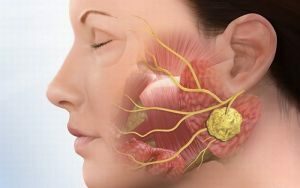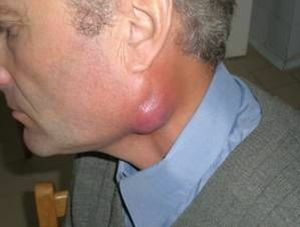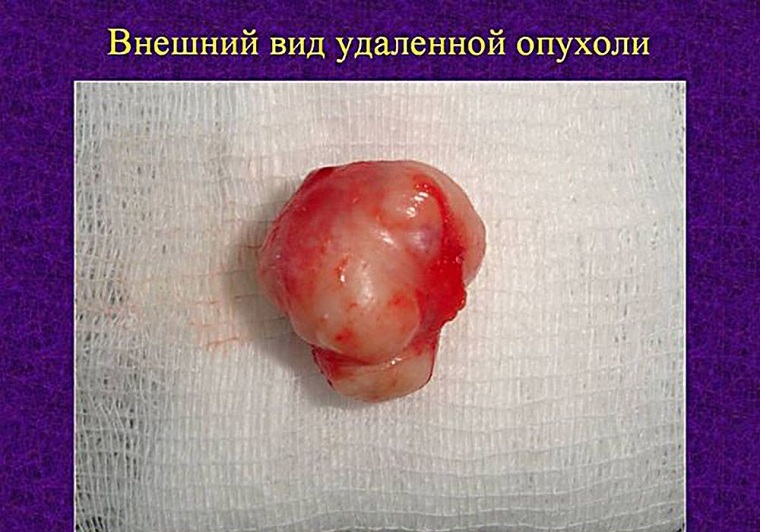 The activity of the salivary glands affects digestion and the condition of the oral cavity. The salivary glands are subdivided into large and small glands. To the large are: submandibular, sublingual and parotid. To small: labial, lingual, molar, buccal and palatine.
The activity of the salivary glands affects digestion and the condition of the oral cavity. The salivary glands are subdivided into large and small glands. To the large are: submandibular, sublingual and parotid. To small: labial, lingual, molar, buccal and palatine.
The greatest amount of saliva produces large glands. Saliva contains substances that process food, preparing it for digestion.
Contents of
- The causes of tumor processes
- Cancer development stages
- Cancer symptoms depending on stage
- Diagnosis of the disease
- Opportunities of modern therapy
- Forecast for
- patients Prophylactic measures
Causes of the onset of tumor processes
The cause of the appearance of neoplasm in the salivary glands has not been fully determined. Experts associate their occurrence with trauma or inflammation of the glands. However, in the history of patients these reasons can not be traced.
The prospective causes of salivary gland cancer include:
- congenital dystopia;
- oncogenic viruses;
- gene mutations;
- hormonal failures;
- smoking;
- frequent head examinations using X-ray;
- therapy with radioactive iodine;
- an unbalanced diet.
Stages of cancer development
The spread and size of the tumor depends on the stage of development of the disorder. Given the type of tumor and its stage, the specialist is able to

Fourth stage of the tumor
to select the necessary course of treatment.
Specialists in most cases use TNM system in determining the oncology stage.
In which:
- T - size of the lesion;
- N - absence or presence of metastases in the lymph nodes;
- M - absence or presence of metastasis in the organs of the body.
Each category has a numeric value. It describes the neoplasm in more detail. For example, T1 means that the tumor is small in size, distributed over a single layer of tissue.
In addition to the TNM system, there is a numerical classification. It is characterized by 4 stages of salivary gland tumor development:
- The first is the initial stage of the disease. The tumor is small in size, does not have metastases.
- The second begins to show itself as a cut of the facial nerve. Cancer tissues are 2 centimeters in volume.
- The third neoplasm is located in most of the gland. Cancer begins to spread to the nearest tissues. The fourth last stage is .The disease progresses, oncology spreads to other organs.
Also, doctors use in their activities such a thing as the degree of malignancy. Cancer cells are examined under a microscope.
If they resemble healthy skin in appearance, then we can talk about their low malignancy. The cells develop slowly, they rarely spread. If the cells are very different from healthy, then the cancer often gives metastases and develops rapidly.
Symptomatic of cancer depending on stage
 Neoplasms are rounded, rough or smooth, dense in consistency. The patient turns to the specialist in most cases after paralysis of the facial muscles or because of stopping salivation. Symptoms of salivary gland cancer at different stages:
Neoplasms are rounded, rough or smooth, dense in consistency. The patient turns to the specialist in most cases after paralysis of the facial muscles or because of stopping salivation. Symptoms of salivary gland cancer at different stages:
- Tumor process at the first stage does not have any symptoms. Sometimes there may be failures in the formation of saliva: increased secretion or complete absence of secretion with concomitant dryness in the oral cavity.
- On the second stage, numbness of the facial muscles occurs on the side of the onset of the neoplasm. Tumescence is already possible to reveal.
- The tumor on the of the third stage increases in size. There is discomfort, and there are headaches, which with time only increase.
- On the fourth stage is symptomatic. Cancer gives metastases, because of which the patient can sometimes feel pain while breathing.
Diagnosis of the disease
The specialist for neoplasm detection applies a number of procedures and analyzes:
- Inspection .The doctor touches the neck and jaw, reveals the presence of edema and seals. Visually inspect coverslips.

- Visualization of the .With the help of positron emission, magnetic resonance imaging and computed tomography, the doctor examines in detail the salivary glands. These methods allow to determine the exact location of the tumor and to establish its size.
- Biopsy of the .The specialist takes a small amount of tissue from the tumor for analysis. During an aspiration biopsy, a needle is injected into the salivary gland and a small amount of cells and fluid is taken from there. Taken material is studied for malignancy.
Once the diagnosis is confirmed, the specialist determines the stage of the disease. This directly determines the correctness of therapy and the patient's perspective.
The possibilities of modern therapy
The treatment plan is established for each specific patient personally. A team of specialists: a surgeon, an oncologist and a radiation oncologist, develop a treatment tactic.
But in sum the complex of possible measures is standard:
- Surgical intervention is required in cases when the tumor did not give a metastasis, has small dimensions, and also with its
 of low malignancy. Sometimes it is difficult to remove the neoplasm, because nerves pass through it. For example, through the parotid gland is the cranial nerve, which controls the facial motion. In the case of a nerve injury, sensitivity, motor activity of the tongue, facial expressions of the face may suffer. When the neoplasm spreads beyond the gland, nerves must sometimes be removed. The surgeon to determine the prevalence of cancer sometimes resorts to removal in the neck of the lymph nodes. After surgery, such complications as: weakness in the lower lip, loss of ear sensitivity, weakness when lifting the arm can be observed.
of low malignancy. Sometimes it is difficult to remove the neoplasm, because nerves pass through it. For example, through the parotid gland is the cranial nerve, which controls the facial motion. In the case of a nerve injury, sensitivity, motor activity of the tongue, facial expressions of the face may suffer. When the neoplasm spreads beyond the gland, nerves must sometimes be removed. The surgeon to determine the prevalence of cancer sometimes resorts to removal in the neck of the lymph nodes. After surgery, such complications as: weakness in the lower lip, loss of ear sensitivity, weakness when lifting the arm can be observed. - Physiotherapy is necessary to eliminate postoperative effects. Difficulty in swallowing and chewing will help to overcome a dietician. He will develop a diet, which will include products that will maximally fit a particular patient.
- Reconstructive surgery is necessary after surgery if a large number of tissues or bones have been removed. The purpose of this treatment is to restore the appearance, as well as the adaptation of the patient to the complexities that arise from breathing, swallowing, speech, chewing. Sometimes, a tissue transplant is required to restore the mucosa in the mouth, throat, jaw. Sometimes you need a denture that will replace the removed part of the jaw.
- Radiation therapy of uses X-rays. They kill the cells affected by cancer. Tumors of the salivary glands are irradiated with the aid of a device that is outside the body. A similar treatment is called external radiation therapy. This method is used when the doctor is concerned about the possible occurrence of metastases if the tumor can not be removed surgically or if the tumor is located outside the salivary glands. To adverse reactions after radiation therapy include: a change in the structure and color of the skin, dryness in the oral cavity, the appearance of wounds or irritation in the mouth, difficulty in swallowing, hoarseness, nausea, fatigue, bone and ear pain, tonsillitis.

Prognosis for
patients The results of therapy for this form of cancer can be considered unfavorable. This is due to statistical indicators.
Only 25% of people are fully cured if they seek medical attention at the first stage of the disease. The recurrence of the disease occurs in 11-44% of people. Metastases occur in 49% of operated patients.
Preventive measures
 The cause of salivary gland tumors has not yet been identified. Malignant neoplasms can arise due to malignancy of benign.
The cause of salivary gland tumors has not yet been identified. Malignant neoplasms can arise due to malignancy of benign.
This determines the main preventive direction - the identification and complete elimination of benign neoplasms. The most dangerous in terms of the transition into a malignant form of mixed tumors.
Public health education includes a number of items:
- An early sign of cancer is the appearance of a clear knot or compaction in the submaxillary or parotid region.
- Elimination of a benign tumor does not lead to damage to the facial nerve, it helps to completely recover. It is for this reason that it is necessary, as early as possible, to consult a specialist and conduct surgical treatment. Even with the full confidence of a specialist in the benign nature of the neoplasm, a pathohistological examination of her tissues should be carried out.
- Correct and timely treatment of inflammatory processes in the salivary glands.
- Complete rejection of bad habits.
- Compliance with diet.
Treatment of salivary glands cancer is a lengthy and complex process. The only way to avoid this disease is the timely diagnosis and removal of benign neoplasms. If there are seals and nodes in the cervical region, you should consult a specialist as soon as possible.
